Top 10 AWS Alternatives - Cost-Effective Cloud Solutions
Cloud computing has revolutionized how businesses manage their IT infrastructure by providing cloud services across the globe like compute engines, storages, Gen AI (recently) and with other resilient features, Amazon Web Services (AWS) has long been the dominant player in this space. However, many organizations are now seeking AWS alternatives to reduce costs, simplify operations, or access specialized features. This article explores the top 10 cost-effective AWS alternatives, helping you make an informed decision for your cloud computing needs.
Understanding AWS and the Need for Alternatives
Amazon Web Services (AWS) is a comprehensive cloud platform that provides over 200 services, ranging from basic computing and storage solutions to powerful artificial intelligence (AI) and machine learning (ML) applications.
While AWS’s comprehensive solutions are impressive, they come with issues that may encourage enterprises to look for alternatives:
- Comprehensive Pricing Structures: AWS’s pricing can be intricate, can also lead to unexpected costs if not carefully managed.
- Steep Learning Curve: The vast array of services and configurations can overwhelm new users and developers.
- Potential Over-Provisioning: AWS’s scalability might lead to over-provisioning resources, especially for smaller projects.
Why Consider Alternatives?
Businesses look for AWS alternatives that provide:
- Simpler Pricing Models: Transparent and predictable pricing helps to avoid unexpected expenditures.
- More Intuitive Interfaces: User-friendly systems that make cloud administration and deployment easier.
- Special Features: Services tailored to certain businesses or use cases, such as healthcare, banking, or gaming.
- Cost Optimization for Smaller Workloads: Effective resource management for startups and small firms to avoid overprovisioning.
Key Factors to Consider When Choosing AWS Alternatives
When assessing AWS alternatives, it’s important to evaluate three critical elements to guarantee the chosen platform corresponds with your company objectives and goals:
- Cost Structure: Look for transparent pricing that matches your budget and workload requirements and, consider platforms that offer cost-effective solutions for your specific use case.
- Ease of Use: Evaluate how quickly your team can adapt to the platform, and look for intuitive interfaces that simplify management and deployment.
- Feature Set: Verify that the provider offers your project's necessary services and features. Consider if the platform provides special tools or integrations relevant to your industry.
- Scalability: Ensure the platform can grow with your business and handle increasing workloads. Look for providers that offer flexible scaling options to match demand.
- Security: Check for compliance with industry standards and regulations. Evaluate the provider’s security features and practices to protect your data.
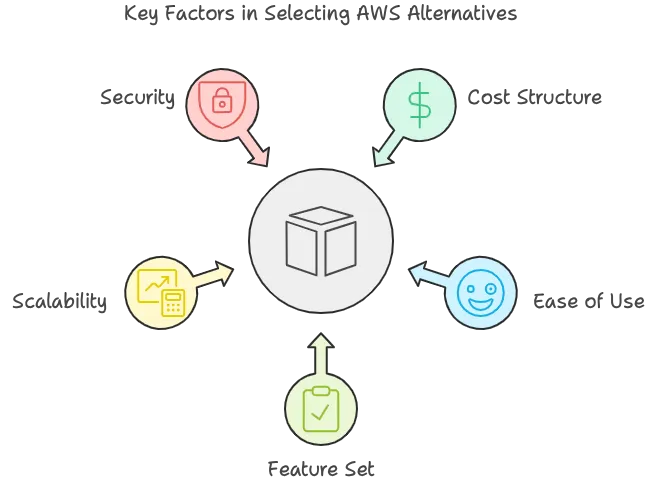
Top 10 AWS Alternatives for Cost-Effective Cloud Solutions
1. Google Cloud Platform (GCP)
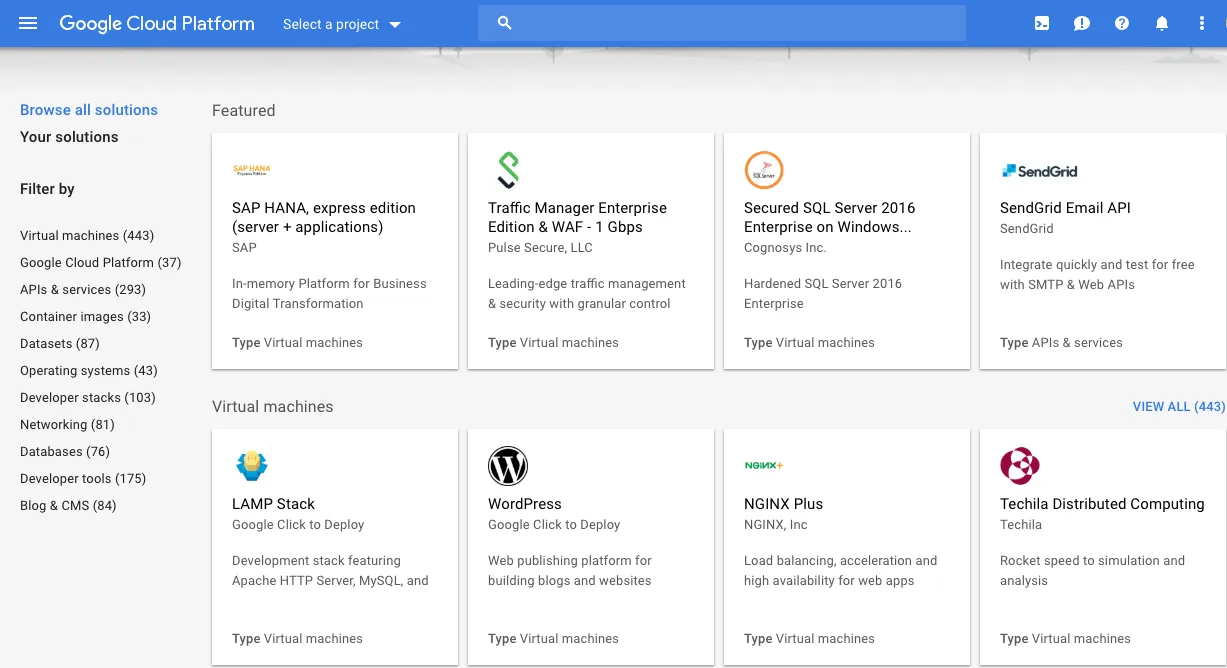
Google Cloud Platform provides an extensive range of cloud services at affordable prices, making it typically more cost-effective than AWS, particularly for specific workloads.
Strengths:
- Sustained Usage Savings: GCP automatically discounts workloads that run consistently, making it a cost-effective option for long-running applications.
- Data Analytics: GCP’s BigQuery provides extensive data analysis capabilities that are particularly useful for massive data processing.
- Machine Learning and AI: GCP’s AI and machine learning capabilities are quite advanced, offering solutions for various AI applications.
- Kubernetes Support: GCP’s Kubernetes Engine is well-known for its extensive support and ease of use for managing containerized applications.
Ideal Use Case:
- Data-Intensive Applications: Projects that need considerable data processing and analysis.
- Machine Learning Projects: Teams that work on AI and machine learning advances. Organizations that use Google Workspace are already linked with Google’s ecosystem.
AWS Comparison:
| Feature | GCP | AWS |
|---|---|---|
| Pricing Model | Sustained use discounts | Pay-as-you-go |
| Data Analysis | BigQuery | Amazon Redshift |
| Machine Learning | TensorFlow, AutoML | SageMaker |
| Global Infrastructure | Extensive, but smaller than AWS | Most extensive global reach |
| Container Support | Kubernetes Engine | Elastic Kubernetes Service (EKS) |
2. Microsoft Azure
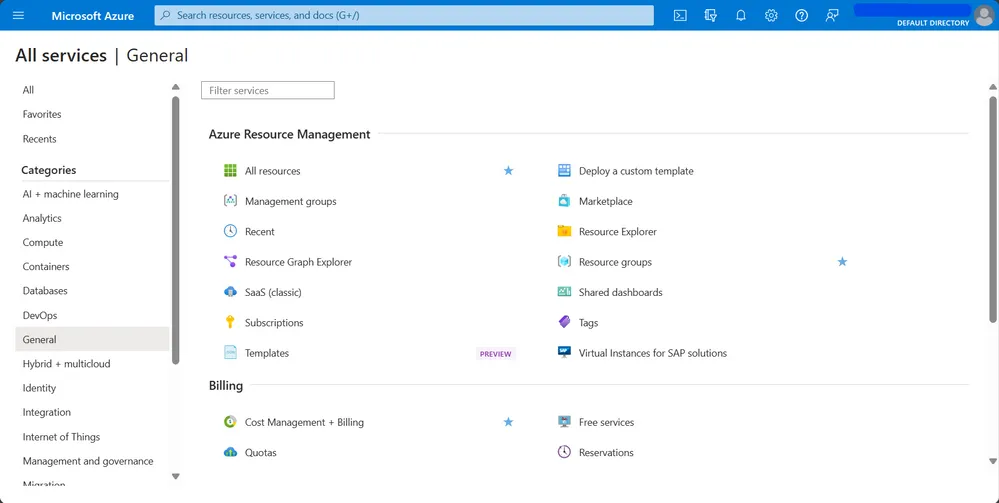
Microsoft Azure is a strong competitor to AWS, especially for enterprises already using Microsoft products. Its integration capabilities and hybrid cloud solutions make it an attractive option for some business scenarios.
Strengths:
- Integration with Microsoft Products: Azure interacts smoothly with Office 365, Windows Server, and other Microsoft technologies, giving a single experience for enterprises that use Microsoft’s ecosystem.
- Hybrid Cloud Solutions: Azure has strong hybrid cloud capabilities, allowing enterprises to connect on-premise and cloud resources seamlessly.
- .NET Development Support: Azure provides strong support for .NET applications, making it perfect for Microsoft ecosystem developers.
- AI and IoT Services: A comprehensive collection of tools for AI and IoT applications, with scalable and adaptable solutions.
Ideal Use Case:
- Enterprises with Microsoft Investments: Businesses that rely substantially on Microsoft tools and software.
- Hybrid Cloud Solutions: Organizations that require seamless integration of on-premises and cloud resources.
- .NET Development Projects: Companies that specialize in .NET application development.
AWS Comparison:
| Feature | Azure | AWS |
|---|---|---|
| Microsoft Integration | Seamless integration | Limited |
| Hybrid Cloud | Strong capabilities | AWS Outposts for Hybrid Solutions |
| .NET Support | Comprehensive | Supported but less integrated |
| AI and IoT | Extensive set of services | A broad set of services |
| Pricing | Competitive for Microsoft workloads | More varied pricing structures |
3. Digital Ocean
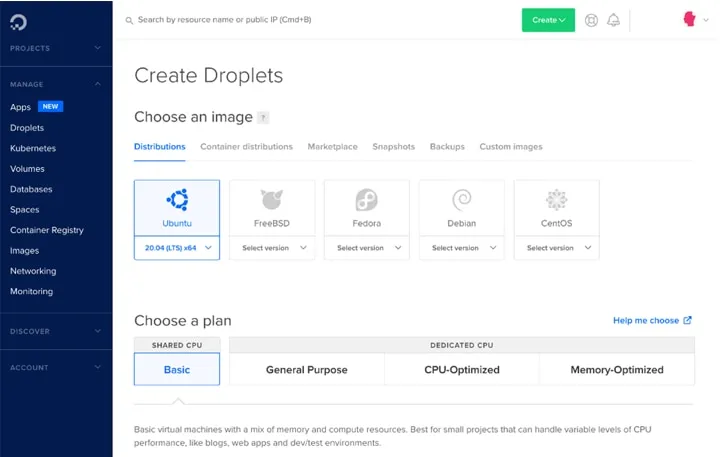
Digital Ocean is known for its simplicity and developer-friendly approach, making it an attractive option for small to medium-sized projects that prioritize ease of use.
Strengths:
Transparent Pricing: Digital Ocean provides plain pricing models with hourly invoicing, making it simple for developers to estimate expenses.
User-Friendly Interface: Digital Ocean is known for its minimal control panel and API which makes infrastructure administration easier.
Quick Deployment: Basic infrastructure may be deployed quickly and easily, enabling rapid development and testing.
Extensive Documentation: It provides a huge number of tutorials and documentation to help developers build and manage applications.
Ideal Use Case:
- Startups: New businesses seeking affordable and user-friendly cloud solutions.
- Individual Developers: Solo developers looking for simple infrastructure management.
- Small to Medium-Sized Projects: Projects that do not require extensive cloud services but instead value simplicity and ease of usage.
| Feature | Digital Ocean | AWS |
|---|---|---|
| Pricing | Transparent and straightforward | More complex |
| User Interface | Simple and intuitive | More comprehensive but complex |
| Deployment Speed | Fast and easy | More options, but potentially slower |
| Documentation | Extensive and developer-focused | Comprehensive, but can be overwhelming |
| Feature Set | Basic and focused on simplicity | Extensive and suitable for all use cases |
4. IBM Cloud
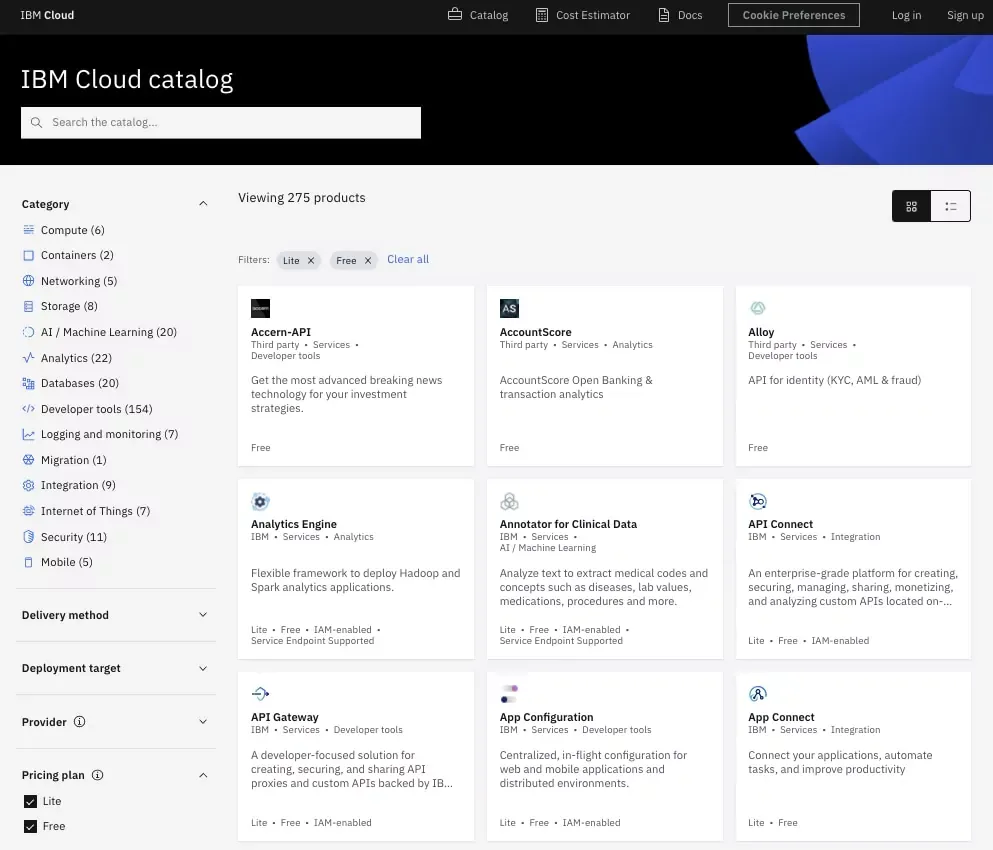
IBM Cloud caters to enterprise demands, with an emphasis on hybrid and multi-cloud environments, and offers comprehensive solutions for enterprises in regulated industries.
Strengths:
- Enterprise Java Support: Provides robust support for enterprise Java applications and legacy systems.
- Watson AI skills: IBM’s Watson boasts advanced AI skills, enabling cutting-edge AI applications.
- Hybrid and Multi-Cloud: Designed for complicated situations that require smooth interaction across several cloud infrastructures.
- Industry-certain Solutions: Tailored solutions for specific industries, including finance, healthcare and more.
Ideal Use Case:
- Large Enterprises: Companies with complex requirements and large-scale operations.
- Regulated Industries: Companies in industries that require strong compliance and security measures.
- Hybrid Cloud Environments: Businesses want to combine on-premises systems with cloud alternatives.
AWS Comparison
| Feature | IBM Cloud | AWS |
|---|---|---|
| Enterprise Support | Strong focus on enterprise needs | Comprehensive but more general |
| AI Capabilities | Watson AI | Amazon AI |
| Hybrid Cloud | Multi-cloud support | AWS Outposts and other services |
| Industry Solutions | Industry-specific offerings | Broad, but less focused on specific industries |
| Legacy Support | Strong for Java and legacy systems | Supported but less specialized |
5. Oracle Cloud Infrastructure (OCI)
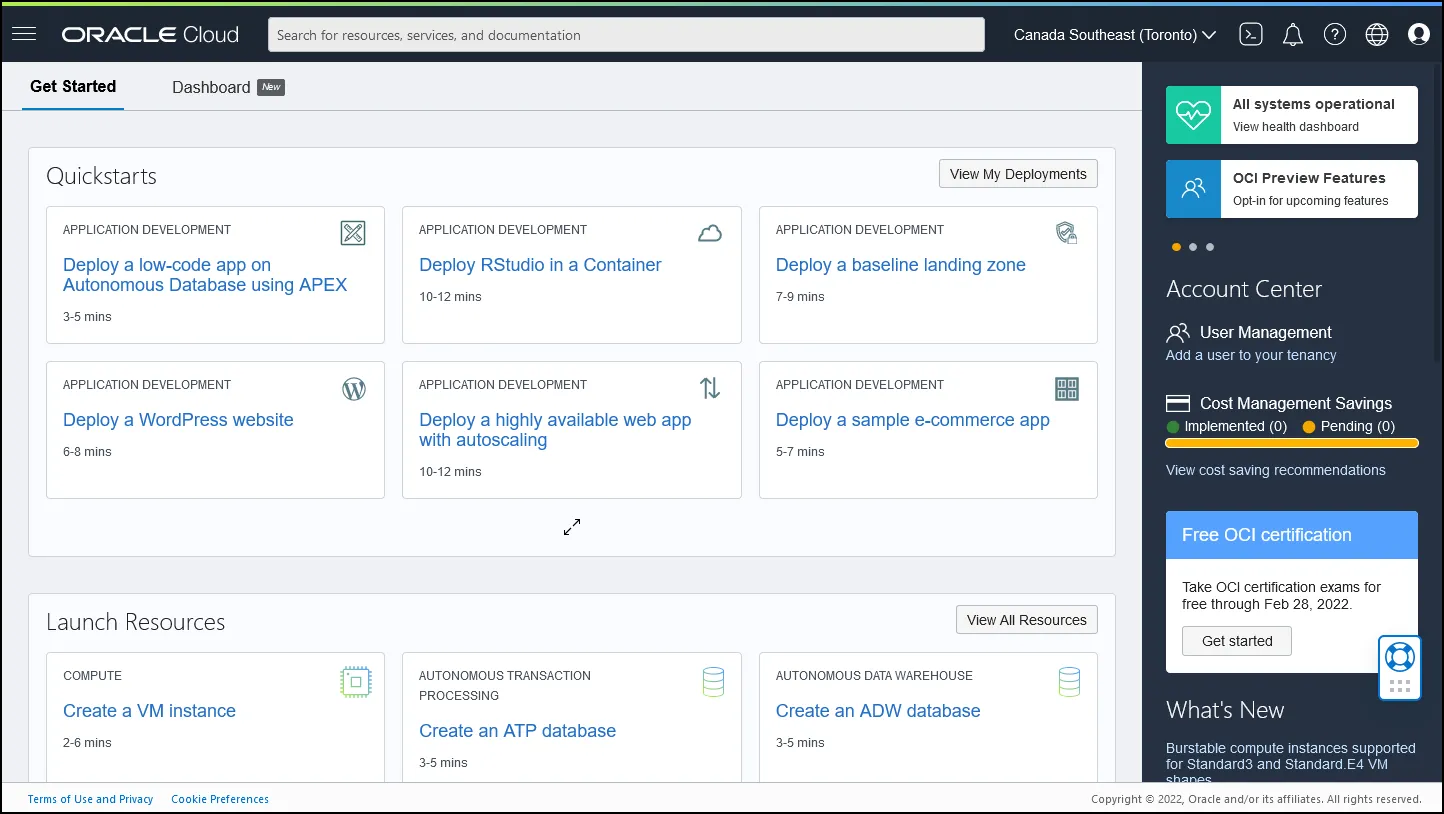
Oracle Cloud Infrastructure is optimized for Oracle workloads, offering high-performance computing and database services to businesses that rely heavily on Oracle technology.
Strengths:
- Cost-Effective for Oracle Workloads: Offers an affordable alternative for operating Oracle applications and databases.
- High-performance and databases: It provides superior performance for data-intensive applications and workloads.
- Autonomous Database Options: The use of autonomous database features reduces administration overhead.
- Competitive Pricing: Provides competitive pricing for computing and storage resources, particularly to Oracle users.
Ideal Use Case:
- Oracle-Dependent Organizations: Businesses that substantially rely on Oracle products and technologies.
- High-Performance Database Solutions: These are for projects that require high-performance computing and database capabilities.
- Data-Intensive Applications: Those with high data processing requirements.
AWS Comparison
| Feature | Oracle Cloud | AWS |
|---|---|---|
| Oracle Integration | Optimized for Oracle products | Limited |
| Database Solutions | Autonomous options | Amazon RDS and other databases |
| Performance | High-performance focus | Broad performance capabilities |
| Pricing for Oracle | Cost-effective for Oracle workloads | More expensive for Oracle applications |
| Management Overhead | Reduced with autonomous features | Requires more manual management. |
6. Alibaba Cloud
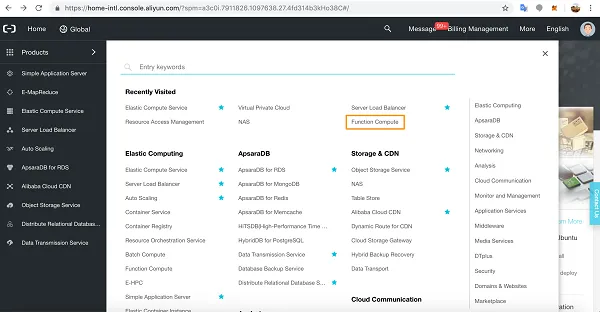
Alibaba Cloud has an extensive presence in Asia and emerging countries, making it an excellent strategic choice for organizations in these regions.
Strengths:
- Comprehensive Pricing: Particularly in the Asian market, where enterprises may benefit from lower costs.
- Data Center Coverage: Extensive network of data centres throughout China and Asia that offer localized services and support.
- E-commerce and Digital Media Services: Provides innovative services geared to the e-commerce and digital media businesses.
- Large Data and AI Support: Leverages Alibaba’s experience in large data processing and AI workloads.
Ideal Use Case:
- Businesses targeting Asia: Companies trying to increase their presence in Asian markets
- E-Commerce and Digital Media: Projects that revolve around e-commerce or digital media services
- Big Data and AI Applications: Applications requiring advanced data processing and AI capabilities.
AWS Comparison
| Feature | Alibaba Cloud | AWS |
|---|---|---|
| Asian Market Presence | Strong focus | Less focused |
| Pricing | Competitive in Asia | More uniform globally |
| E-commerce Services | Tailored for digital media | More general |
| Data Center Coverage | Extensive in China and Asia | Global |
| AI and Big Data | Strong expertise | Broad support |
7. Linode
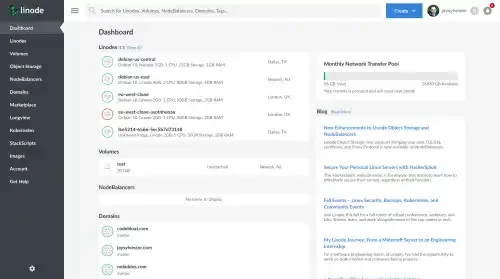
Linode provides a clear, developer-friendly cloud platform with a simple price structure, making it suitable for developers and small enterprises.
Strengths:
- Simple Pricing Model: Providers predictable pricing, allowing business to budget their cloud spending.
- Fast VM Provisioning: Virtual Machines are provisioned quickly, allowing for faster deployment and testing.
- SSD Storage: Contains high-performance SSD storage, which improves application performance.
- Managed Kubernetes Service: Provides a managed Kubernetes service for container orchestration, making container administration easier.
Ideal Use Case:
- Developers and Startups: Small teams seeking simple and affordable cloud solutions.
- Small Businesses: Companies requiring basic cloud services with predictable pricing.
- No-Frills Cloud: Projects that value simplicity and usability above complex functionality.
AWS Comparison
| Feature | Linode | AWS |
|---|---|---|
| Pricing Model | Simple and predictable | More complex |
| Deployment Speed | Fast and easy | More options but potentially slower |
| Storage | SSD included | Optional |
| Kubernetes | Managed service | Elastic Kubernetes Service (EKS) |
| Feature Set | Basic and focused on simplicity | Extensive and suitable for all use cases |
8. OVHcloud
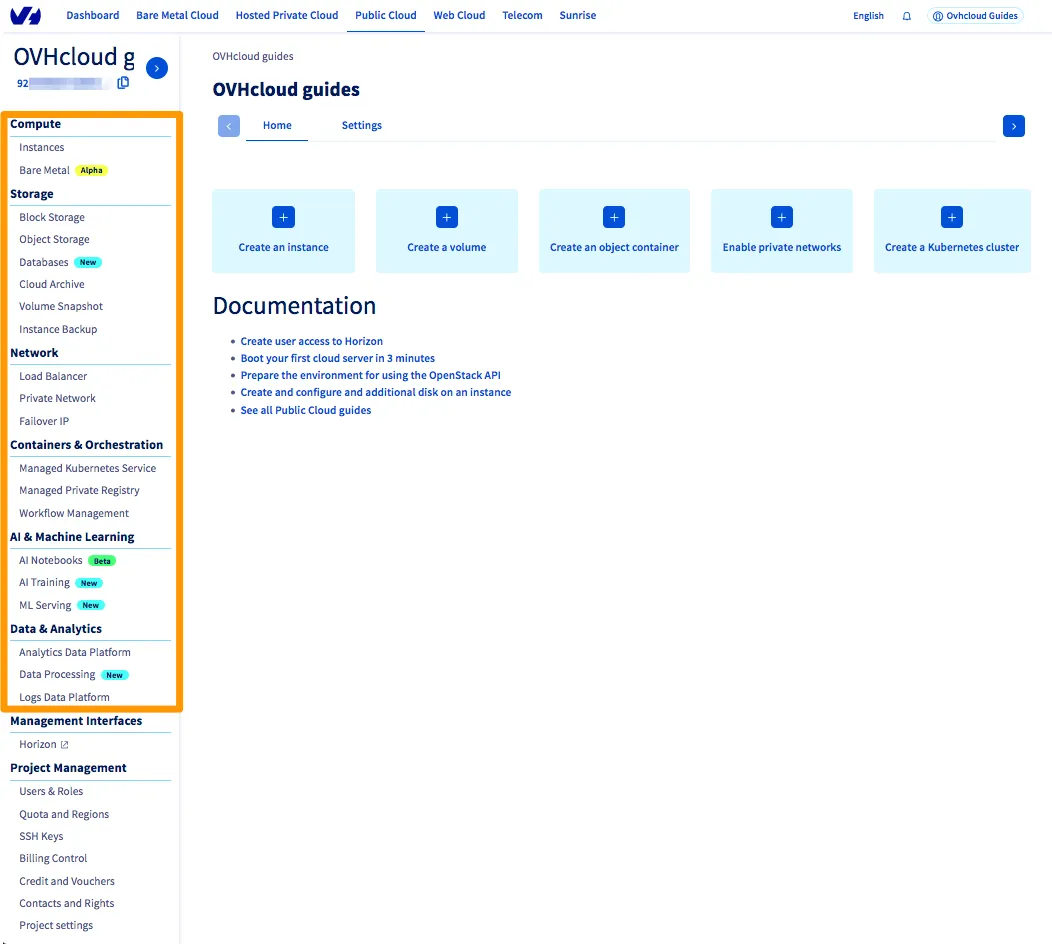
OVHcloud prioritizes data sovereignty and European compliance, making it an ideal alternative for enterprises with stringent data residency obligations in the EU.
Strengths:
- European Data Sovereignty: Our GDPR-compliant data centres ensure data residence and compliance.
- Competitive price: Provides competitive price for cloud and dedicated server solutions.
- OpenStack-Based Cloud: Offers a public cloud built on OpenStack that is flexible and customizable.
- Bare Metal Servers: Provides high-performance bare metal servers with extensive networking functionality.
Ideal Use Case:
- European Businesses: Companies prioritizing data residency and compliance within the EU.
- Data Sovereignty: Organizations with strict data sovereignty requirements.
- Customization Requirements: Projects that require flexible and configurable cloud solutions.
AWS Comparison:
| Feature | OVHcloud | AWS |
|---|---|---|
| European Compliance | Strong focus | Global, with EU options |
| Pricing | Competitive | More uniform globally |
| Customization | OpenStack-based flexibility | Proprietary cloud |
| Bare Metal | Available | Available, but different offerings |
| Data Residency | Strong focus on EU | Available but less focused. |
9. Vultr
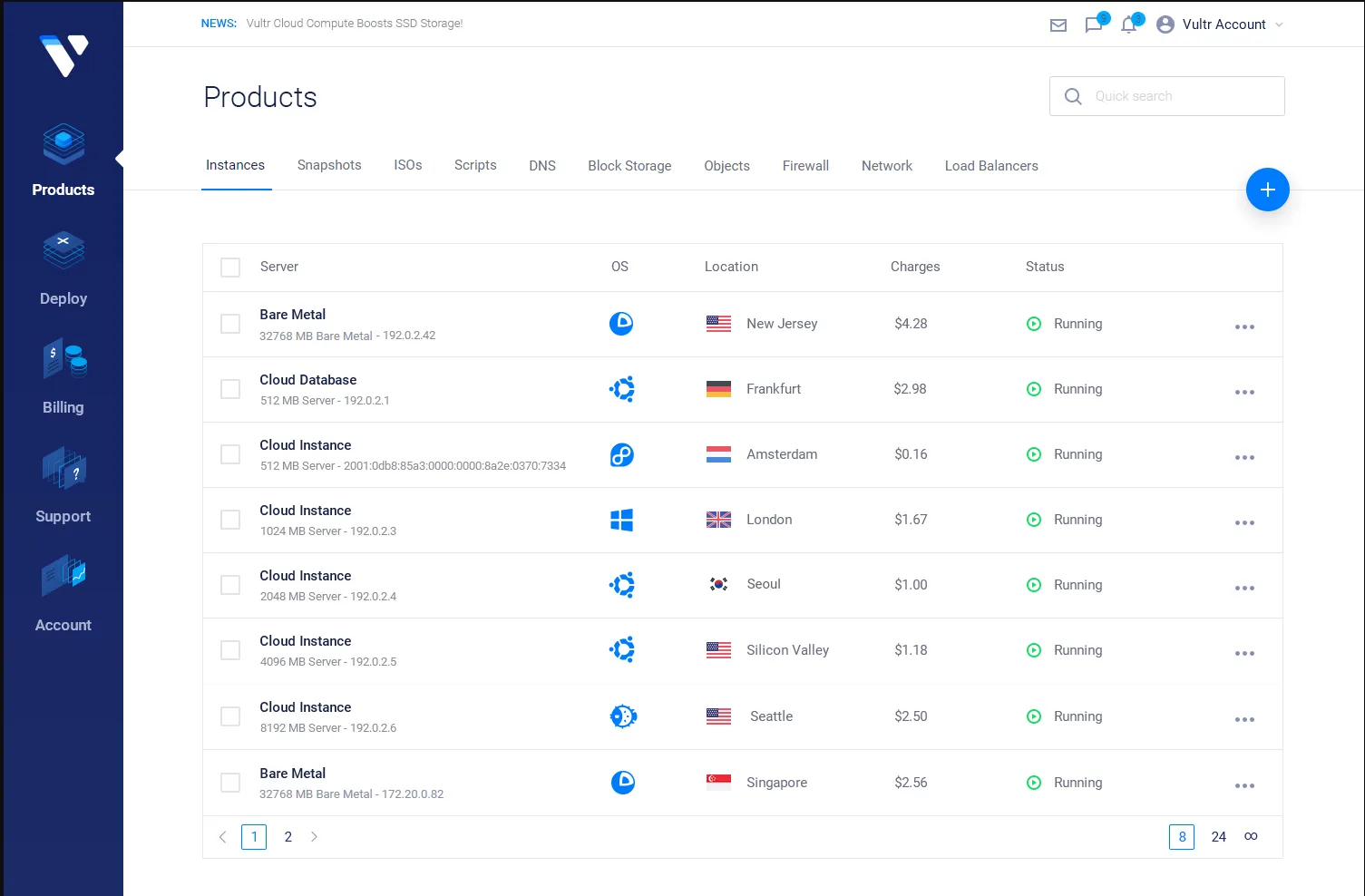
Vultr offers high-performance cloud computing at low pricing, ensuring a balance of cost-effectiveness and performance.
Strengths:
- Global Network: A vast network of data centres for low-latency applications, guaranteeing rapid and dependable communication.
- Simple price: Hourly billing with defined price tiers allows firms to easily control costs.
- Bare Metal Insurances: Provides bare metal instances for demanding workloads, which improves performance.
- One-Click Deployments: Enables one-click application deployment for common stacks, making the deployment process easier.
Ideal Use Case:
- Developers: Individual developers seeking cost-effective and high-performance cloud solutions.
- Performance-Cost Balance: Businesses require a balance between performance and cost-effectiveness.
- Low-Latency Applications: Applications demanding low-latency and high-speed connectivity.
AWS Comparison:
| Feature | Vultr | AWS |
|---|---|---|
| Pricing | Simple and clear | More complex |
| Performance | High-performance focus | Broad performance capabilities |
| Bare Metal | Available | Available, but different offerings |
| One-Click Deployments | Supported | Available but less focused |
| Global Network | Extensive | Most extensive |
10. Heroku
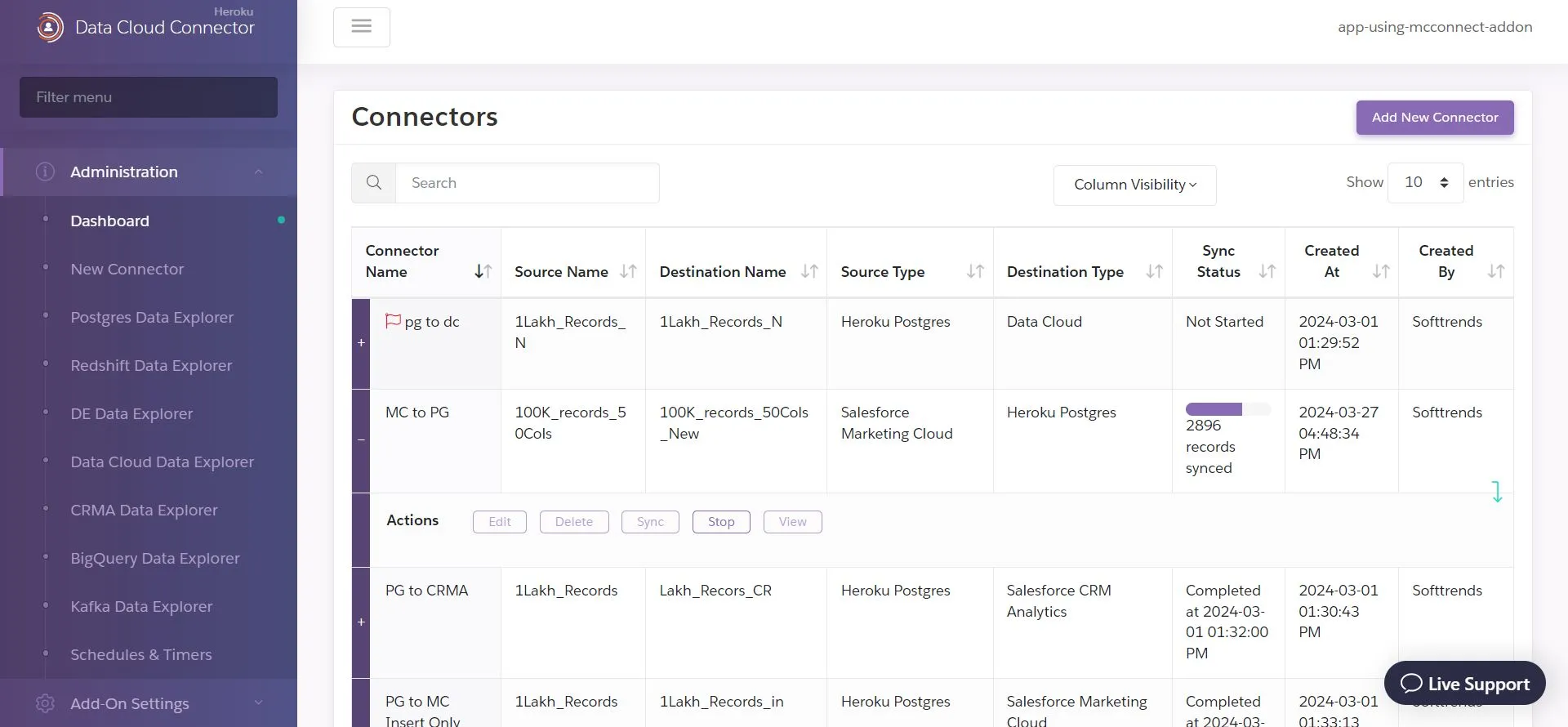
Heroku is a Platform as a Service (PaaS) that streamlines application deployment, that streamlines application deployment, making it perfect for developers that prioritize quick application development.
Strengths:
- Easy Deployment: Simplifies the deployment and scalability for web applications, letting developers to focus on code rather than infrastructure.
- Extensive Add-Ons: Provides a marketplace of add-ons for databases, monitoring, and other services that improve program capabilities.
- Automated Management: Automates infrastructure management, lowering developer workload.
- Multi-Language Support: Allows developers to work with a variety of programming languages and frameworks.
Ideal Use Case:
Web apps: Teams dedicated to deploying web apps with minimum infrastructure administration.
Developer Teams: Organizations seeking a more efficient development and deployment process.
AWS Comparison
| Feature | Heroku | AWS |
|---|---|---|
| Deployment Ease | Simple and streamlined | More options, but more complex |
| Add-Ons | Extensive marketplace | Broad service offerings |
| Infrastructure Management | Automated | Requires more manual management |
| Language Support | Multi-language | Broad, but less focussed |
| Target Use Case | Rapid development and deployment | More general-purpose and extensive use cases. |
Monitoring and Observability with SigNoz
As you explore AWS alternatives, maintaining visibility across your infrastructure becomes crucial. SigNoz, an open-source Application Performance Monitoring (APM) tool, provides an integrated approach, combining logs, metrics, and traces into a single pane of glass, simplifying the monitoring process.
By utilizing ClickHouse, a highly efficient columnar database, SigNoz excels at processing and storing log data, making it a great choice for robust log management and analysis. This approach enables a seamless connection of application metrics and traces.
For example, if you observe significant latency in your application, you may immediately go through traces at that moment to find performance bottlenecks.
Additionally, SigNoz provides extensive views of tracing data via Flamegraphs and Gantt charts, which improves the visibility of services and events. Users can build custom dashboards to visualize critical performance metrics, and the alerting tools enable proactive issue solutions.
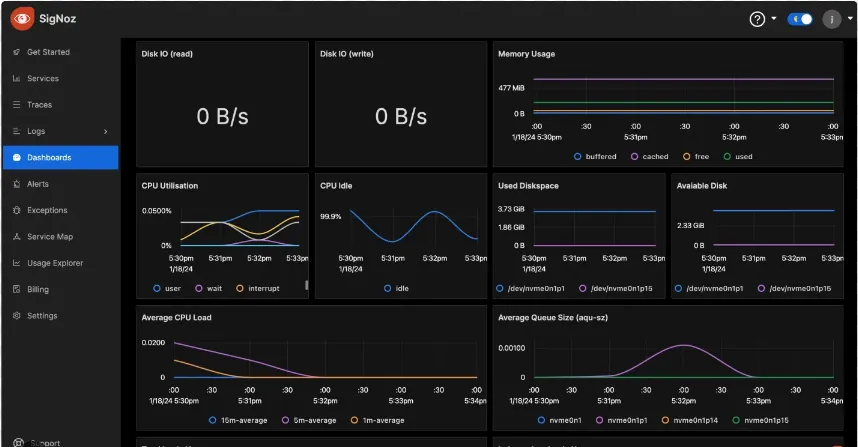
Comparison with CloudWatch
| Feature | SigNoz | AWS Cloud Watch |
|---|---|---|
| Platform | Open-source, self-hosted | Proprietary, fully managed by AWS |
| Data Storage | Utilized ClickHouse for efficient log data processing | Relies on AWS infrastructure and services for data storage |
| Pricing | Transparent, open-source model with no licensing fees | Pay-as-you-go pricing model with potential hidden costs |
| Ease of Use | User-friendly interface with intuitive navigation | Requires deeper AWS knowledge for effective utilization |
| Observability | Logs, metrics, and traces in a unified interface | Primarily logs and metrics, with limited tracing capabilities |
| Tracing | End-to-end with detailed Flamegraphs and Gantt charts | Basic tracing; advanced tracing requires AWS X-Ray |
| Integration | Supports a wide range of integrations with non-AWS systems | Best suited for AWS-centric environments and services |
| Customization | Custom dashboards for KPIs and performance metrics | Pre-defined dashboards, with limited customization options |
| Alerting | Customizable alerting with flexible notifications options | Alerts integrated with AWS SNS and other AWS services |
| Community and Support | Active open-source community, with community-driven support | Official AWS support, with tiers based on pricing plan |
SigNoz Cloud is the easiest way to run SigNoz. Sign up for a free account and get 30 days of unlimited access to all features.
You can also install and self-host SigNoz yourself since it is open-source. With 24,000+ GitHub stars, open-source SigNoz is loved by developers. Find the instructions to self-host SigNoz.
By using SigNoz, you can ensure consistent monitoring practices regardless of your chosen cloud provider, helping you maintain performance and reliability across your entire infrastructure.
Strategies for Migrating from AWS to Alternative Providers
Migrating from AWS to another cloud provider needs careful strategy and execution to achieve a successful move. here are the main strategies to consider:
- Evaluate Your Current AWS Usage: Identify the services used. Determine which AWS services your apps and infrastructure rely on, such as EC2, S3, and RDS.
- Find the Equivalents: Match these services with their counterparts on the target platform. This will aid in developing the migration strategy and assuring service compatibility.
| AWS Service | Alternative Provider Equivalent |
|---|---|
| EC2 | GCP Compute Engine, Azure VMs, DigitalOcean Droplets |
| S3 | GCP Cloud Storage, Azure Blob Storage, Backblaze B2 |
| RDS | GCP Cloud SQL, Azure SQL Databases, DigitalOcean Managed Databases |
- Plan for Data Transfer: Large datasets can incur significant time and cost for transfer. Assess data volumes and plan accordingly. Utilize built-in data transfer tools and services provided by both AWS and the target platform.
| Data Transfer Method | Description | Cost Implications |
|---|---|---|
| Direct Data Transfer | Moving data directly between platforms | May incur bandwidth costs |
| Offline Transfer | Use physical storage for large datasets | Initial cost, no bandwidth |
| Cloud-Native Tools | Utilize built-in migration services | Often cost-effective |
- Evaluate Application Compatibility: Some applications may require changes to run smoothly on the new platform, especially if they use proprietary AWS features. Set up a testing environment on the new platform to identify compatibility issues before full migration.
| Application Aspect | AWS Feature | Consideration for Migration |
|---|---|---|
| Compute Services | EC2 Instances | Ensure compatibility with target platform VMs |
| Storage Solutions | S3 Buckets | Verify storage APIs and data access methodologies |
| Networking | VPC, Route 53 | Adjust networking configurations as needed |
- Use Migration Tools: Many cloud providers offer migration tools to facilitate the transition from AWS, making the process more straightforward. Consider using third-party tools that provide more customized migration solutions and support.
| Migration Tool | Description | Provider |
|---|---|---|
| AWS DataSync | Automate data transfer between AWS and other services | AWS |
| Azure Migrate | Simplify migration from AWS to Azure | Microsoft Azure |
| Google Cloud Migrate | Move workloads to Google Cloud | Google Cloud Platform |
- Implement a Phased Approach: Start the migration with non-critical workloads to minimize risk and allow for adjustments. Continuously monitor the migration process and, 3make necessary adjustments to optimize performance and efficiency.
| Phase | Description | Benefits |
|---|---|---|
| Phase - 1 | Begin with non-essential workloads and data | Test compatibility and performance |
| Phase - 2 | Gradually migrate essential applications and data | Ensure stability and minimize disruptions |
| Phase - 3 | Fine-tune the setup on the new platform | Enhance performance and cost efficiency |
.webp)
Factors to consider while migrating from AWS
Key Takeaways
Migrating to an AWS alternative can offer significant benefits, but it requires strategic planning. Here are some essential points to remember:
Cost Savings and Specialized Features:
- Often provide significant cost savings and specialized features tailored to various use cases
- For example, Google Cloud Platform (GCP) excels in data analytics, Microsoft Azure offers seamless Microsoft product integration, and DigitalOcean is known for its simplicity and ease of use.
Consider Key factors When choosing a provider:
- Pricing: Look for transparent and predictable pricing structures to avoid unexpected costs.
- Ease of Use: Consider platforms with user-friendly interfaces and manageable learning curves.
- Scalability: Ensure the provider can scale according to your business needs.
- Regional Presence: Choose a provider with data centres in regions important to your operations.
Proper Monitoring and Observability
- Critical for new cloud providers to ensure visibility across different platforms and help maintain service levels. Implement observability tools to track performance and troubleshoot issues effectively.
- Carefully planning your migration strategy helps ensure a smooth transition from AWS to the chosen alternative. Start with non-critical workloads and gradually scale up, continuously monitoring and adjusting as needed.
Migration Steps:
By considering these strategies and key factors, businesses can leverage AWS alternatives to optimize costs, improve performance, and tailor cloud services to specific needs.
FAQs
What are the main reasons to consider AWS alternatives?
The primary reasons include cost savings, simpler pricing structures, easier management for smaller projects, and access to specialized features not available on AWS.
How do AWS alternatives compare in terms of global infrastructure?
While AWS has the largest global footprint, providers like Google Cloud, Microsoft Azure, and Alibaba Cloud offer extensive worldwide coverage. Smaller providers may have a more limited geographic presence but can offer advantages in specific regions.
Can I use multiple cloud providers simultaneously?
Yes, many organizations adopt a multi-cloud strategy to leverage the strengths of different providers, improve redundancy, and avoid vendor lock-in. However, this approach requires careful management and may increase complexity.
What are the potential challenges of migrating from AWS to an alternative?
Common challenges include data transfer costs and time, application compatibility issues, differences in service offerings, and the need to retrain staff on new platforms. Careful planning and possibly engaging migration specialists can help address these challenges.
Resources
https://signoz.io/comparisons/cloud-monitoring-tools/
https://signoz.io/blog/cloud-strategy/
https://signoz.io/blog/monitoring-your-go-application-with-signoz/
